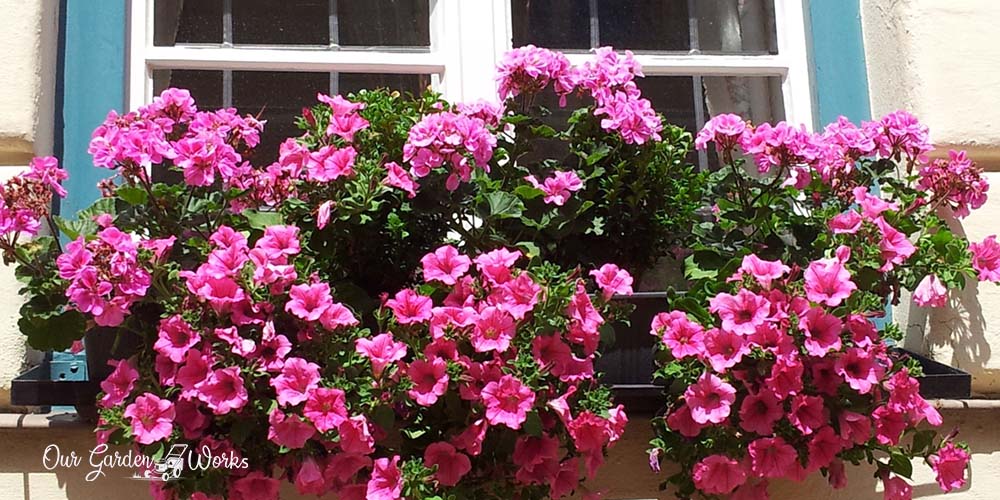Geraniums are popular for their colorful blooms that uplift the ambiance of any garden space.
Adding them to your garden plant collection is one thing and placing them in a landscape is another puzzle you must solve.
Discover how big do geraniums grow and how you can place them in your garden to level up your landscape design.
One thing you should know about geraniums is most of them are actually not geraniums by nature. The geraniums we know today are actually called pelargoniums. It is almost the same case with the peace lily, which is not a true lily by classification.
The true geraniums that belong to the genus geranium are the hardy type of perennial geraniums. These hardy flowering species are also known as cranesbill varieties.
In this post, we will use the common name geranium for both pelargoniums and true geraniums.
Q: How big do geraniums grow?
The height and width of geraniums depend on the variety. Geraniums have a wide array of plant types such as vining, shrub, and succulents. Across the different varieties, they can grow from 4 inches to 4 feet in height and 8 inches to 2 feet in width. The tallest geranium varieties come from the true geraniums or the hardy perennials.
As a common summer plant in the Southern part of the US, geraniums take around 9 to 12 months to reach their full height. When properly cared for, they can last for 40 to 50 years.
6 Groups of Geraniums
Geraniums have almost 300 varieties that can overwhelm you and lead to choice paralysis.
If you plan to landscape your garden or patio with geraniums, it’s best to get to know some varieties based on their height.
Geraniums are mainly grouped into six based on their classification and growing habits. These include
Cranesbill (True geraniums)
Known as the toughest geranium variety, hardy cranesbill is extremely cold-tolerant and can withstand climates with temperatures -20°F, even -50°F for some species. It is pest and disease resistant and hardy to USDA Zone 5. They possess darker-colored blooms with hues of blue, red, and violet.
Cranesbill geraniums make a great addition to sun-facing borders, rock gardens, and ground covers for weed-infested areas. Here are some examples of true geranium varieties:
- Geranium ‘Rozanne’.
- Geranium cinereum ‘Sophie’.
- Geranium ‘Ivan’.
- Geranium ‘Tiny Monster’.
- Geranium nodosum ‘Clos de Coudray’.
Zonal geraniums
These are geranium varieties known botanically as pelargonium x hortorum. They are an annual garden favorite notable for their kidney-shaped leaves. The name zonal came from the dark green or burgundy markings found on its leaves.
Their blooms often come with double or ruffled petals. Unlike hardy geraniums, zonal varieties are a common target of botrytis.
Here are some of the popular zonal geraniums that you can grow:
- White splash zonal geranium.
- Salmon zonal geranium.
- Light pink splash zonal geranium.
- Coral zonal geranium.
- Bright red zonal geranium.
Ivy geraniums
These are trailing geraniums also known as pelargonium peltatum. They are considered tender perennials in USDA Zones 10-12 and are mostly grown as annuals in other parts of the country.
It is a gardener’s favorite since it’s less expensive, matures quickly, and grows well in hanging baskets.
Compared to zonal geraniums, the ivy varieties are more sensitive to the sun. They need partial shade and partial light to thrive. Since it is a trailing plant, it grows up to 2 feet high and 3 feet wide.
Check out some of the ivy geranium varieties that gardeners rave about:
- Sybil Holmes.
- White Mesh.
- Beauty of Eastbourne.
- King of Balcon.
- Amethyst.
- Mahogany
Scented geraniums
Based on their name, scented geraniums are grown for their aromatic leaves. They are best placed in an herb garden along with thyme and basil since they are also used to improve the aroma of some dishes.
Varieties of scented geranium are often named after the aroma they produce. The color of their blooms is either red or white and can grow up to 3 feet.
Find out the different scents that you can experience from different scented geraniums below:
- Almond geranium (P. quercifolium).
- Apple geranium (P. odoratissimum).
- Lime geranium (P. nervosum).
- Nutmeg geranium (P. x fragrans ‘Nutmeg’)
- Peppermint geranium (P. tomentosum).
- Strawberry-scented pelargonium (Pelargonium x scarboroviae).
Regal geraniums (Martha Washington)
Named after the wife of George Washington, regal or Martha Washington geraniums are among the first crossbreeds in the pelargonium family.
They have heart-shaped leaves with darker tones of green and flowers with red, pink, or burgundy colors.
Regal geraniums have a trailing growth habit similar to ivy geraniums but may require specific climate conditions to develop blooms such as cool nighttime temperatures. Its varieties include
- Black Beauty Regal Geranium.
- Burgundy Regal Geranium.
- Orchid Regal Geranium.
- Pink Regal Geranium.
- Velvet Red Regal Geranium.
Cross between ivy and zonal (Interspecific)
Interspecific geraniums are a cross of ivy and zonal species that are more heat tolerant and bloom throughout summer even in Texas. They are low-growing varieties reaching around 10 to 12 inches during maturity.
Here are some of the popular crossbreeds in the market:
- Geranium Calliope.
- Geranium Caliente.
Geranium varieties based on their height
We selected the tallest to smallest geranium from all the 6 groups above. By knowing their maximum height, you’ll be able to estimate where they’ll fit best in the garden.
Tall geranium varieties (3 ft. to 4 ft.)
‘Alba’ or Geranium maderense ‘Alba’: A member of the true geranium species that grows up to 4 feet.
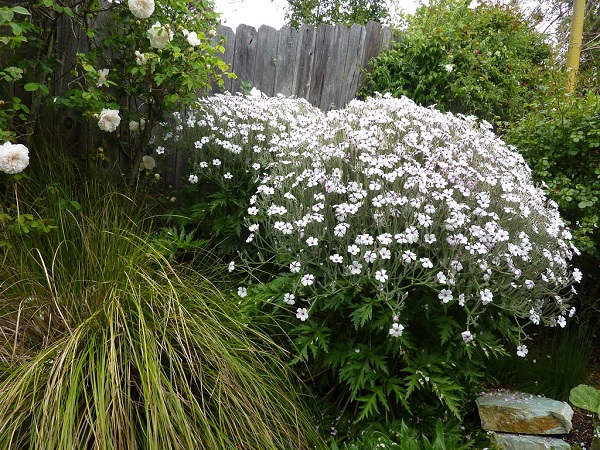
It is known for its abundant white blooms and unusual height in the true geranium family. It is cold-sensitive and can grow outdoors in USDA zones 9 to 11. It can thrive in full sun and partial shade.
‘Bevan’s variety’ big root geranium or Geranium macrorrhizum: This hardy variety is another giant in the family of geranium that grows up to three feet in USDA Zones 4 to 8. It is notorious for being a fast grower due to its thick rhizomes that spread rapidly in the ground.
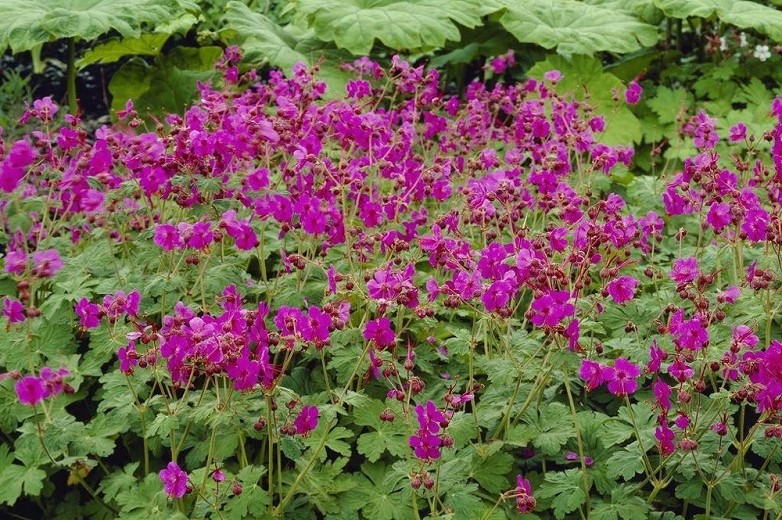
Aside from its rapid growth, it has aromatic leaves that can alter the ambiance in your garden.
Ideal garden locations for tall geraniums
The most ideal locations for tall geraniums are the bare spaces under the canopies of trees.
They also make great edging plants that will cast a shadow on your garden pathway at noon. Due to their size, they are more conducive for in-ground planting or big pots.
Here are some pots that can handle the weight of these big geranium species:
Mid-size geranium varieties (2 ft.)
Big EZEE pink geranium or Pelargonium ‘Big EZEE’ pink: This geranium variety is one of the best landscape materials for its cotton candy-like pink blooms.
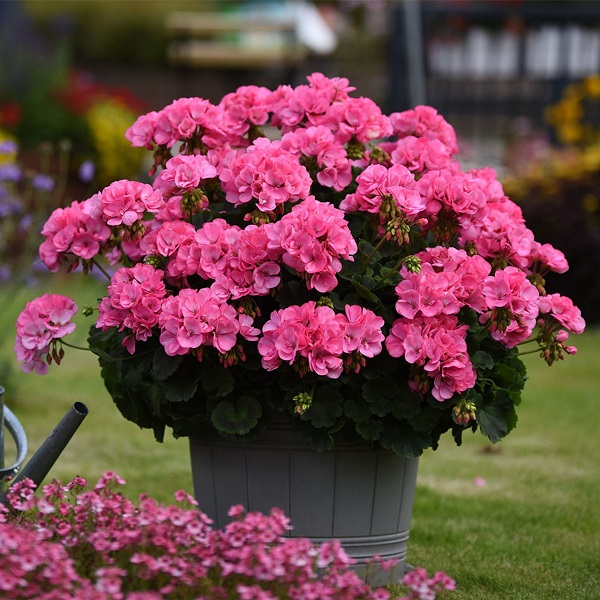
It grows around 16 to 18 inches and generously produces blooms during the growing season.
Candy white parfait geraniums: Add a pop of light colors to your garden with the unique blooms of this geranium variety.
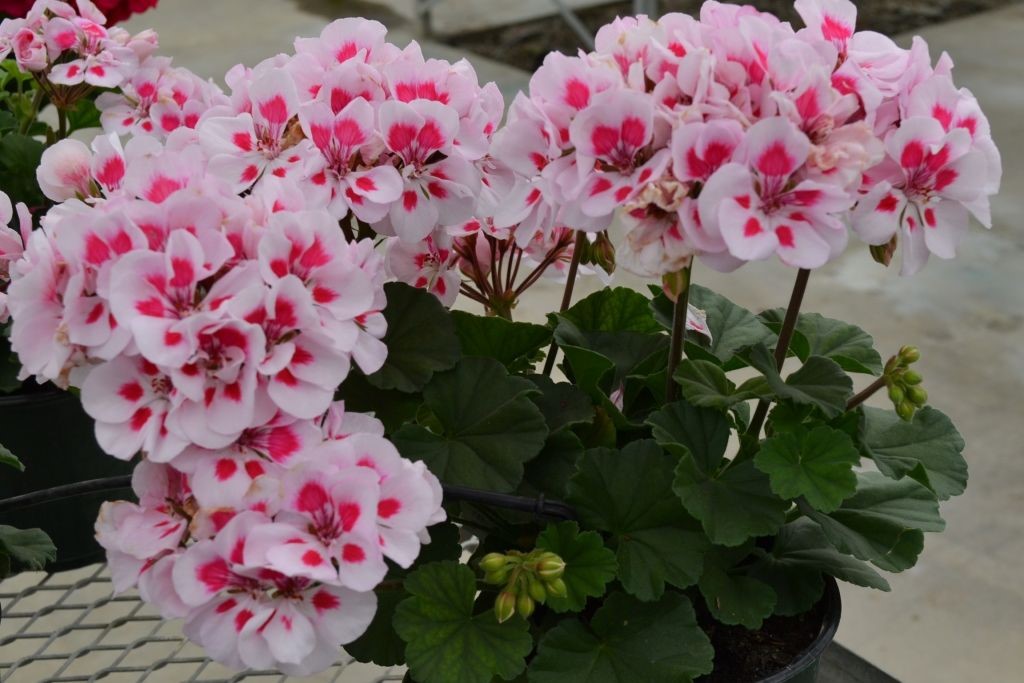
It has balls of white blooms with streaks of red from the center, extending to each petal. It grows up to 2 feet high and 2 feet wide, allowing it as a good compact plant in entryways and patios.
Patriot bright violet geranium: A zonal geranium variety that has the same growing habit as candy white parfait varieties.
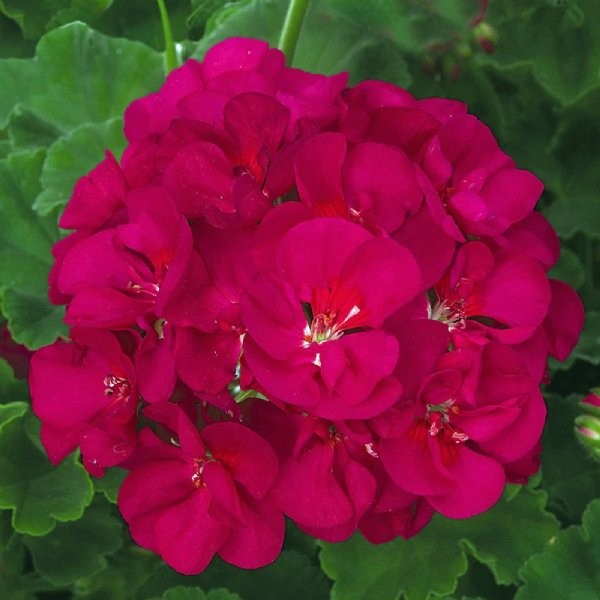
However, its clumps of flowers have a reddish-violet color that gives it an elegant look. It is notable for its self-branching habit and its good tolerance against heat.
Dixieland deep red geranium: If you want bigger blooms, this interspecific variety is a good option. It produces balls of big red blooms that have a light scent. It is a perfect landscape design material for formal gatherings or cut flowers for bouquets.
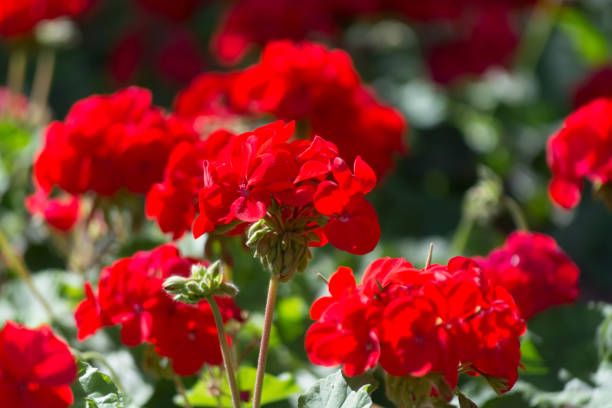
Ideal garden locations for mid-sized geraniums
Mid-sized geraniums are ideal options for plant boxes and big pots outdoors.
They are generous in developing blooms that can easily populate your garden with vibrant colors of red, pink, white, and violet.
Here are some ideal plant box designs that will match the balls of geranium flowers in your garden:
Low-growing geranium varieties (1 ft. to 1.5 ft.)
Calliope hot pink geranium: Growing at a height of 1 foot, this interspecific geranium produces long-lasting hot pink blooms throughout the growing season.
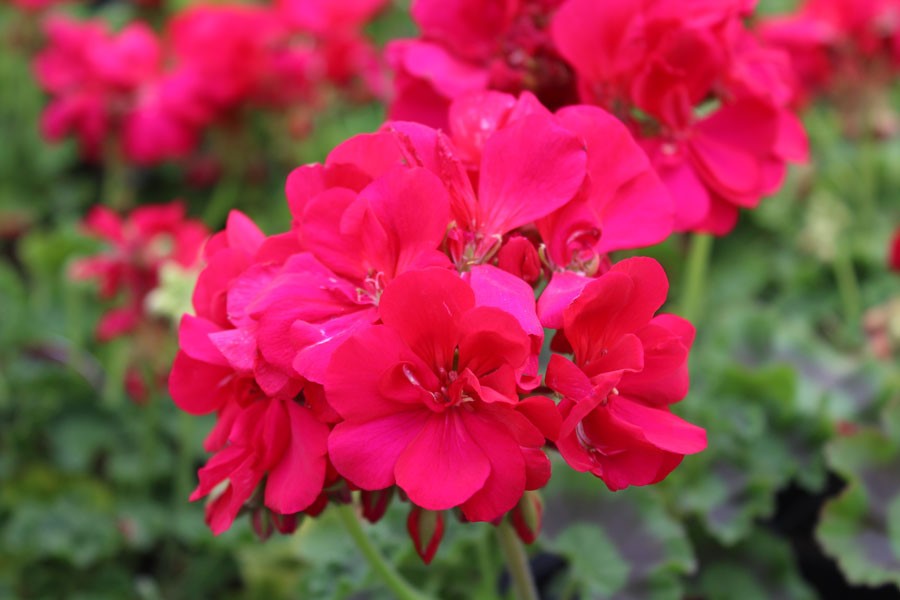
It has a mounded growing habit and acquired the heat tolerance of the zonal geranium species.
Fantasia white geraniums: This is a low-growing variety producing several balls of plain white flowers and dark green foliage.
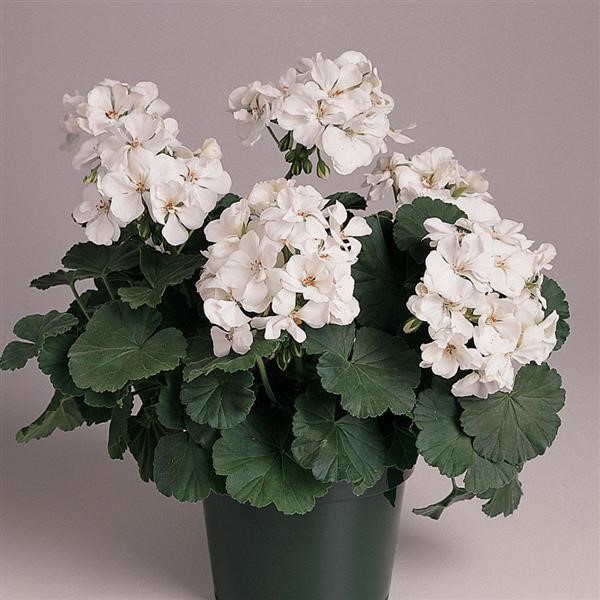
With its uniformly-produced flowers, it makes a good centerpiece for rock gardens or any landscape garden design.
Ice queen geranium or Mint Julep: The banded foliage and its red blooms allow this annual geranium to stand out in any garden.
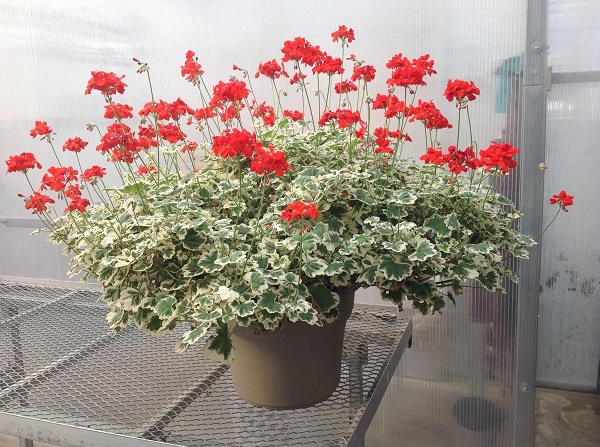
The leaves have a white band at the edge unique to this specie compared to the plain green or dark green in other geranium varieties. It is a versatile plant that can be placed in borders, hanging baskets, and pots.
Mrs. Pollock geranium: Geraniums are mostly grown for their flowers. However, some varieties like Mrs. Pollock have foliage that stands out from their blooms.
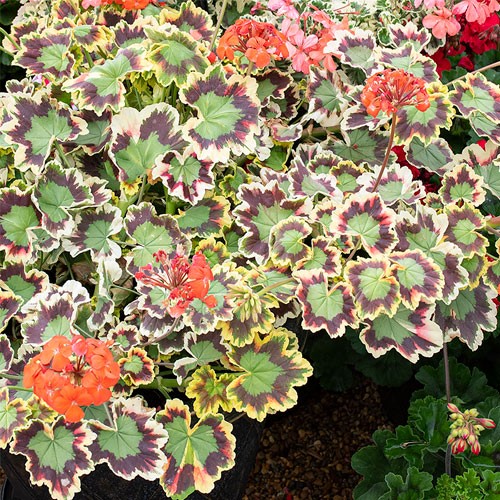
This annual geranium variety is an upgraded version of Ice Queen geranium because of its white and black bands on the leaf edges. It is also variegated with different streaks of colors like
- Burgundy.
- Cream.
- Pink.
Survivor baby face geranium: Grows at a height of 16 inches, this germanium variety is an ideal addition to landscapes with a touch of pastel colors.
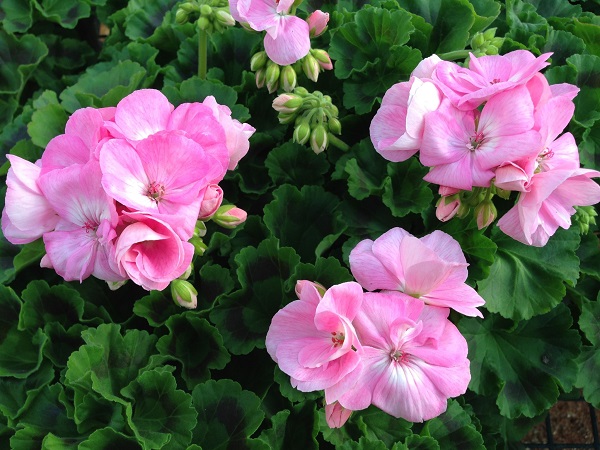
The ball of light pink flowers is mildly scented, which usually emerges in late spring. It is a variety ideal to pair with late-season bloomers like astilbe and peonies.
Ideal garden locations for low-growing geraniums
Small geranium species are more versatile when it comes to their location or container. They can perfectly fit in hanging baskets or pots placed on your patio or indoors next to the windows.
If you are planning on hanging your geraniums, here are some cool options that you can try:
Final Thoughts
We hope that this post helped you discover how big geraniums grow and the selection you have based on their size and variety.
Geraniums are very rewarding plants to have since you can choose from scented to vining varieties and either get balls of blooms or uniquely banded leaves.
From the tallest geranium to the shortest ones, which variety are you going to choose for your garden? Let us know in the comments below.
If you enjoyed this post, please don’t forget to share this post with your friends and family so they’ll discover the right size of geranium that would perfectly suit their garden landscape.
